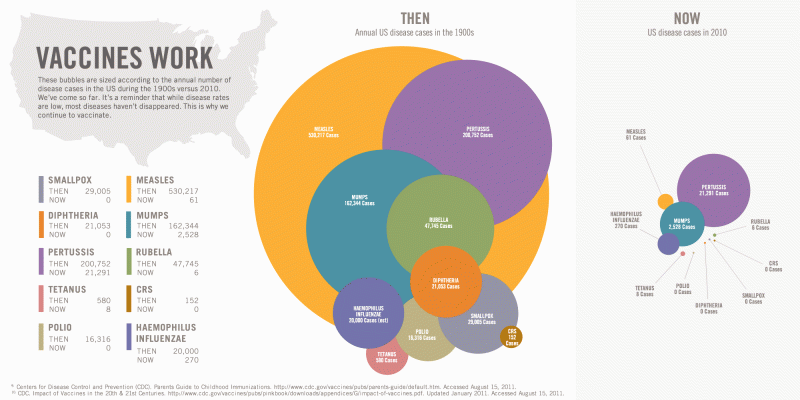By Andria Caruthers, Smith/Patterson Fellow
You can run, but you can’t “hide in the herd.” The herd of vaccinated people, that is. You see, some people think that if other kids are vaccinated, they don’t need to vaccinate their own. They think “hiding in the herd” of vaccinated kids is somehow the best way to protect their kids from getting sick. It’s true that their kid might be OK. Often what happens is something called “herd immunity” which means that the big group of kids who are vaccinated actually protect the one or two kids who aren’t. Unfortunately, though, herd immunity only works if 90 percent of the group is vaccinated (Global Measles and Rubella Strategic Plan 2012-2020, 2012). And the scary fact is, if vaccination levels drop below 90 percent (which they haven’t…yet), we’re in prime position for another outbreak of whooping and/or measles. In 2012, we saw the highest number of whooping cough outbreaks since 1959 (CDC, 2012). Disease like this are on the uptick because, as in the case of whooping cough, immunity can wear off over time, and in some areas, we are seeing a drop in the number of vaccinations (CDC, 2013). Some also think that vaccines don’t work, so they figure, “Why bother?”, failing to realize not only the impact this choice has on others, but also the lives vaccines have saved over the past century.
A great infographic from MLive on herd immunity and how it works:
Image credit: MLive
Do vaccines really work?
It’s simple to understand how vaccines work. But what makes these tiny guys power players in the world of public health is how effective they have been. In 2013, through the glories of technology, researchers were able to study more than 88 million cases of individuals who had contagious diseases. These are all the cases reported between 1888 and 2011! That’s pretty incredible, but it’s not even the most impressive part.
Researchers then looked at how often diseases (i.e. polio, pertussis, measles) appeared before and after vaccines were introduced to the public. Guess what they saw? Disease dropped among the U.S. population after disease-specific vaccines were introduced.
Image source: Science Based Pharmacy
To illustrate how big of a deal this is, the researchers estimated that 103 million cases of contagious diseases have been prevented since 1924, and 26 million just in the last decade! That’s 103 million moms, dads, sons, daughters, sisters, brothers, and loved ones that were not lost to something completely preventable. So to answer the question, yes, vaccines work.
What’s important to remember is that vaccines are only as effective as we allow them to be. Remember the concept of “herd immunity” we talked about earlier? The fewer of us that are vaccinated the more disease will spread. But with most of us being vaccinated the spread of disease is much more constrained. It works like any team sport. If players are always assuming someone else is going to get the ball and make a play, they’ll never win. Relying on another teammate to win the game is a losing strategy. We’ve got a much better chance at winning when we take responsibility and work as a team.
Simply put, vaccines work. Just look at the difference in the number of annual U.S. disease cases between the 1900s and 2010. Pretty astonishing. This is a great reminder of how far we have come, but also a warning of where we could return if we don’t talk about the misunderstandings surrounding vaccines. It takes a team effort; let’s play to win!
Check out our next vaccination blog installment next week!






